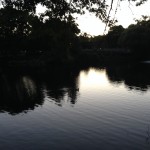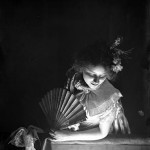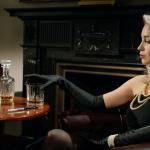I remember as a teenager, home alone one afternoon, listening over and over to David Bowie sing “Is there Life on Mars?” while gazing at the cover of his Hunky Dory album. I longed to be able to articulate the feelings I had inside me, and somehow this British man wearing makeup came closer than anyone else I’d yet encountered. I remember wondering– if my mother listened to him sing “Is there Life on Mars?” would she at least partially understand the desperation, the hopelessness, the profound alienation I felt all the time? I never dared to ask her. My friends and I got high instead of talking honestly about it all.
I didn’t know yet that I’d come to identify the vague loneliness and misery I felt all the time as heavily influenced by sexism and racism, classism and homophobia, in a declining Midwestern industrial town. I didn’t really get yet, that there were problems that were systemic, that the tiny lives of my friends and me were part of a much larger picture. It wasn’t till I was a young adult, beyond the reach of parents and school systems, accompanied instead by friends who deeply saw and heard me, that I could begin to name the parts of who I was and what I knew.
Last night I went to the “Be Heard Minnesota Youth Poetry Slam Series, 2014,” sponsored by a group called TruArtSpeaks. I saw there a group of young people who have found their voices, and who are speaking and heard at the intensity level I longed for myself as a teenager.
What happens when adults like Tish Jones, the Executive Director of TruArt Speaks, devote their lives to making young voices heard? When their coach Khary Jackson (AKA 6 is 9) takes time to work with them to express themselves clearly and with passion? When a packed house of family, friends, and strangers at a local theater pays and cheers and tells them they have changed us by speaking their hearts?
This is what healing looks like, I found myself thinking, even with wounds that are still gaping, in a world of oppression and violence and addiction and all of the other reasons that these kids and other people suffer. This is where healing begins.
Seven out of the nine contestants were young women of color. They, and the two young men—one African American, one white and openly gay–spoke about the ravages of racism and sexism and homophobia in their lives, of parents who are absent or abusive, of schools designed for them to fail. And there we were, a cheering, clicking, community of support, hanging on their every word. What does that do to a young person, I wonder.
For me, as an adult, as a white person, as a person with power and privilege in the culture, such an encounter also means healing. My healing begins with listening, and believing, young people, and marginalized people, the way I wanted my own mother to hear me. It begins with paying attention. And it extends to supporting the organizations and leaders who elicit these voices, in understanding that without people like Tish Jones and Khary Jackson, the safety to tell stories in that theater would not have been present for the young people on the stage.
This is what healing looks like. Led by the courageous, the ones who speak truths denied by louder voices, supported by love and respect. This is what healing looks like.
I feel profoundly blessed to have attended the slam last night, and to be represented as a Minneostan by the six young people who will move on to the national levels of competition as spoken word artists. But, as the MC kept saying over and over last night, This isn’t about competition. It’s about community, and leadership development, and having a good time together. And we did.














